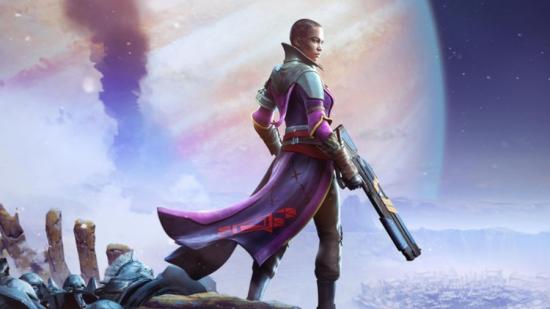Destiny 2 on PC has arrived. We have finally got one of the PS4’s most-hyped FPS games on a platform that can actually support accurate sharpshooting! (Oooh, burn!) If you’re interested in playing, you may want to have a read of this handy guide to everything you need to know about Destiny 2 for PC.
An MMO that’s also an FPS, and also sort of not an MMO at all, Destiny 2 is a strange beast of a game. It’s like plenty of things you’ve played before – a bit Borderlands, a bit World of Warcraft, a bit Call of Duty – but packaged in a manner that doesn’t make it any of these games’ direct rivals. That means Destiny 2 is beholden to only its own rules, which makes it an increasingly fascinating project.
Band together with friends and strangers alike in the best MMOs on PC.
We’ve got everything Destiny 2 related here – our review, details on the PC version’s extra features, and guides to all the core elements of the game. Classes, planets and worlds, PvP, open-world activities, DLC, and the story are all covered here. Consider this your one-stop-shop for all the important stuff, basically.
Destiny 2 PC review
You can read our Destiny 2 PC review here, where we analyse the game’s successes and failures, and judge where it lands in the huge landscape of PC shooters. We like it a lot, but there’s still problems to be solved.
Destiny 2 released for PC on October 24. That was almost two months behind the console version, which launched on September 6.
You can see our interview with Destiny 2’s head of PC, David Shaw, above, where he explains that the decision around the PC release date was a hard one. They even considered delaying the console version, but eventually settled on a staggered release schedule. The final point, Shaw said, is that they wanted to “make sure we get it right, that we nail it, stick the landing,” and that required a little extra time.
Destiny 2 DLC
Destiny 2 will be supported by DLC. The first game saw two DLCs in its first year, two bigger expansions after that, and a variety of free seasonal updates. The Destiny 2 expansion pass has meant a similar approach in the sequel.
The first DLC pack was calledCurse of Osiris, and took us to Mercury in search of the legendary guardian, Osiris. The second DLC pack wasWarmind, and focused on Rasputin, an AI designed to protect humanity, and a key partof Destiny’s lore.
We fully expect a full-scale expansion to release later in 2018, akin to the first game’s The Taken King expansion, which released the year after the base game launched.
Thanks to a deal with Sony, the PS4 gets a few exclusive things at launch, including a strike mission. It is, thankfully, only a timed exclusive: we’llget this DLC on PC in 2018.
Destiny 2 story
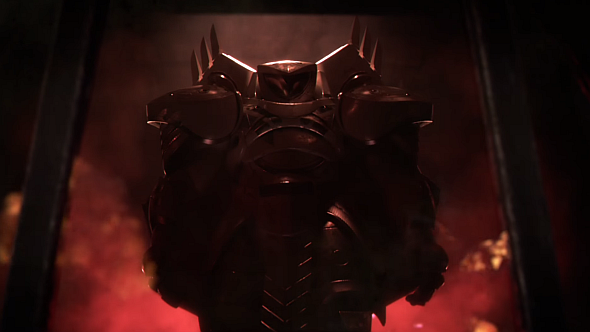
Destiny 2 puts increased focus on plot and story, and it all starts with The Red Legion. They’re a faction of a militaristic alien race called the Cabal, and they’ve attacked Earth’s Last City in overwhelming force. Their commander is Dominus Ghaul, who believes that the Traveller – Destiny’s big, iconic white orb – made a mistake in granting its powers to you rather than him. He’s out to convince it to change its mind, seemingly by holding it hostage: a big ship in the centre of his fleet can be seen unfurling and wrapping around the Traveller.
When this happens, all Guardians (that’s you) are de-powered. You lose your gifts and stagger, defenceless, away from the fight. In contrast to the original Destiny’s shrieking ghouls, Ghaul is a thinker; he’s organised, he’s got his stuff together. In the words of game director Luke Smith: “he’s like Alan Rickman’s character in Die Hard.”
The City falls and the Guardians are scattered to the winds. It’s your job to find and reunite them, get your powers back, and take back your home.
If you’re a long-term Destiny fan and were hoping to discover what the mysterious Darkness is, then don’t get your hopes up; Destiny 2 won’t reveal anything more. The focus will be on Light, and game director Luke Smith has even said that Bungie themselves don’t really know what the Darkness is.
For more, check out our Destiny 2 story guide.
Destiny 2 planets and worlds
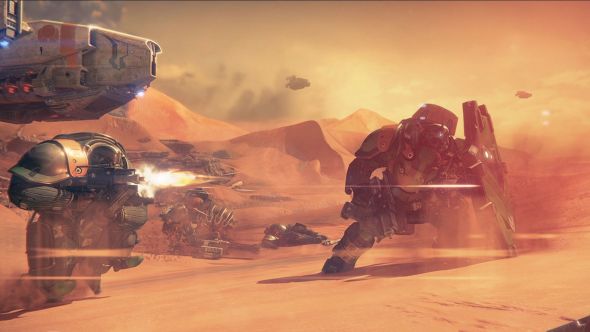
As with the original, Destiny 2 launched with four planets. These are: Titan, Io, Nessus, and Earth. Don’t worry about recycled content; we’re off to Earth’s European Dead Zone, rather than Destiny 1’s Cosmodrome. Bungie say the European Dead Zone is the largest place they’ve built by a “factor of two.” Here you can meet some brand new characters, including the wonderfully British sniper Devrim Kay. He’s the overseer of the area, and you can check in with him regularly for new gear. You can chat to him using the game’s new conversation interface, and head out on Adventures for him.As with other Destiny NPCs, collecting specific tokens helps improve your standing with him and net you better rewards.
The EDZ is the first place you go after the City falls, and is home to a new hub area: The Farm. It features a football pitch with score tracking, allowing fire teams to have a kick-around in their downtime between activities. Joining these new elements are tried-and-trusted hub elements such as a Postmaster and a Cryptarch (this time Tyra Karn, not Master Rahool), plus exactly what you’d expect to see on a farm: chickens.
Nessus is a planetoid that’s been almost entirely overrun by The Vex, another returning enemy race from the original. They’ve transformed it into one of their giant computers, and it’s started growing its own red vegetation. It looks pretty striking. Nathan Fillion’s Cayde-6 has got himself trapped here, so you’ll probably want to rescue him.
Titan is a moon of Saturn. It’s a big methane ocean with no landmass, but the monolithic ruins of humanity’s Golden Age constructions stick out above the waves like oil rigs. The Vanguard’s Commander, Zavala, retreats here to lick his wounds, suffering a personal crisis after the loss of the City.
Io is a moon of Jupiter, and is said to be the last place in the Solar System that the Traveller’s Light touched. As such, it’s sacred to Guardians, particularly Warlocks – this is where Ikora Rey flees in a fit of rage. It looks very spooky, and is the furthest from Earth we’ve been in the franchise so far.
For in-depth details, check out our Destiny 2 planets guide.
Destiny 2 classes and powers
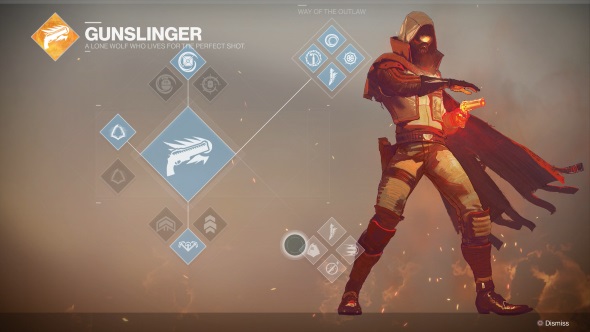
Destiny has three classes that roughly conform to the classic Warrior, Mage, Rogue stereotypes: Titan, Warlock, and Hunter. Each class also has specialisations, or subclasses – nine in total.
The new subclasses are the Titan Sentinel, the Warlock Dawnblade, and the Hunter Arcstrider. Each has an elemental affiliation (Sentinels are Void elemental, Dawnblades are Solar, and Arcstriders are Arc). They join the returning Hunter Gunslinger, Titan Striker, and Warlock Voidwalker, the original three subclasses.
On top of that, Destiny 2 also features the subclasses from The Taken King: the Hunter Nightstalker, the Titan Sunbreaker, and the Warlock Stormcaller. That means all classes have a subclass for each of the game’s three elements.
Each subclass has its own devastating Super ability, plus three lesser abilities on shorter cooldowns. One applies a special effect to your melee attack, another is your grenade, and the third varies by class: Hunters have a dodge, Titans a deployable shield, and Warlocks an area-of-effect buff.
Each subclass also has a skill tree with perks to tweak all these abilities, plus passive effects – you can see the Gunslinger’s in the image above. This allows you to further hone your role on the battlefield.
For a full breakdown of all nine subclasses, skill trees and all, check out our Destiny 2 class guide.
Destiny 2 activities
The worlds of Destiny 2 are filled with a variety of activities, quests, and events to keep you occupied. These are broadly split into four categories: story missions, strikes, raids, and open-world activities.
Story missions can be completed solo or in parties, generally take between ten and twenty minutes. Towards the start and end of the campaign these missions are pretty flashy with large set-pieces, while the middle act opts more for open world exploration.
The campaign is Destiny 2’s early game. When you’re done, you move on to strikes – meatier missions designed to be completed in teams of three. They feature puzzles and boss fights, and take roughly 30 to 40 minutes depending on the difficulty. The toughest strikes, Nightfalls, take longer still, though they’re now available in two difficulties. In form and function, strikes are similar to dungeons in any other MMO: they drop a lot of loot, and are integral to the mid-game ‘gear grind’ through which you’ll prepare for the raid.
Raids are the pinnacle of the PvE game: lengthy, six-person dungeons with obscure or complicated mechanics and powerful bosses. They can take hours to complete and require skill and teamwork, but drop the best loot.
This is all standard Destiny so far, but the open world has seen a big overhaul for the sequel. In this mode of play, you can roam freely across Destiny 2’s planets, completing tasks both big and small with no loading screens between them (an exciting change from the original). Lost Sectors are mini-dungeons that might take some time to find, adventures are bite-sized quests that’ll unfold a little story, while world quests are bigger quest chains that’ll peel back the mysteries of each planet. Open world tasks are even being included in the end-game loot system withFlashpoints, a weekly activity centred around a specific world.
Check out our Destiny 2 open world guide for full details.
For some activities loadouts will be locked. In the original game you could swap your weapons and even subclass at any time, allowing you to react to the situation provided you had the right tools in your inventory. Restricted loadouts could encourage tactical thinking in regard to weapon selection, and an increased focus on the roles played by individual players. It could also promote a restrictive meta where the community shuns players who don’t own the ‘correct’ weapons for the activity. Only time will tell if Bungie have got this decision right.
Destiny 2 PvP
Destiny is primarily a PvE game – you’ll have to shoot at least somealiens to get anywhere – but competitive multiplayer is still a key component, and indeed it looks like Bungie are taking it more seriously in the sequel.
PvP is now always 4v4 (it used to be 6v6 or 3v3), and available across a variety of game types, grouped into two playlists: ‘quickplay’ is a casual playlist with quick matchmaking at the expense of skill, whereas ‘competitive’ will take longer to match you, but emphasise skill rating and connection speed.
The Destiny 2 PvP game modes are:
- Control – returning with small tweaks from the original and available in quickplay, Control is like COD’s Domination mode. Teams compete to capture and hold three flag zones, which generate points and add a score multiplier to each kill. Winners are the first to hit the points cap.
- Clash – Clash is a simple 4v4 team deathmatch mode. First team to 75 kills, or the team that’s leading when the eight minute time limit expires, wins.
- Countdown – available in the competitive playlist, Countdown is clearly inspired by PC classic Counter-Strike. Teams take turns trying to plant a bomb in one of three sites, and win each round either by protecting it until it goes off, or by killing the enemy team. First to five points wins the match.
- Survival – available in the competitive playlist, this is a ‘spiritual successor’ to the original’s small team tactics mode, Skirmish. Both teams have a pool of eight respawns, and the winning team are the ones who exhaust their opponents’ respawns first. Power ammo spawns in the centre of the map, pulling combatants together.
- Supremacy– essentially, this is COD’s Kill Confirmed mode. Guardians will drop prismatic dodecohedrons called crests when killed, and you don’t score until you grab the crest. You can collect allies’ crests to deny the enemy points. First team to 50 crests, or with the highest score after eight minutes, wins.
Maps are set across a range of planets, both new and old – Altar of Flame, for instance, is set on Mercury, which isn’t a fully-featured PvE location in Destiny 2. Or Destiny 1, come to think of it.
PvP has always existed across multiple layers: as part of The Crucible for general play; in Iron Banner mode for those wanting to use their Light level gear; and in Trials of Osiris for the really hardcore. Iron Bannerhas returned, andTrials of the Nineprovides Destiny 2’s most competitive mode.
Destiny 2 did not launch with ranked PvP, but don’t rule it out. Bungiesaid they’re proud of their “long tradition of being active in the competitive realm” – that’s a Halo reference, there – and if the community decide they’re interested in “propping up” Destiny in that way, “then that’s something we think we are interested in.” Many players also felt the changes to Destiny 2’s loadout and ability systems were designed with better PvP in mind. Don’t rule out better competitive features, and maybe an esports push, around the time the new Trials mode launches.
For more, check out our Destiny 2 PvP guide.
Destiny 2 clans and guided games
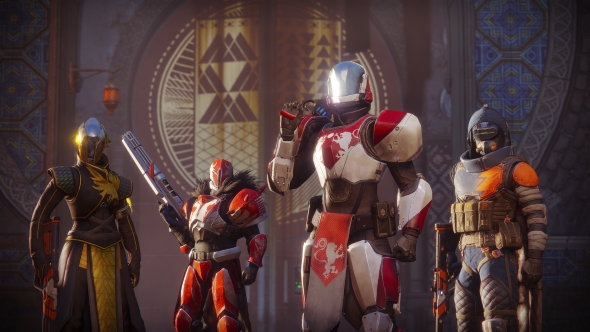
Clans are supported in-game, akin to MMO guilds, and leaders are able to set a clan name, motto, and create a banner design. These communities of players can group up from an in-game social menu in order to complete activities like raids and Nightfalls together. Need a clan? Why not join ours?
For anyone not in a clan and wishing to play a raid, a new system called Guided Games can help. The lack of matchmaking in the original meant you’d have to form raid groups with people from your friends list, which meant around 50% of Destiny players never tried one. To change this, a group of players who need an additional one or two people can advertise via the Guided Games system. Solo players looking to raid can then answer the call, allowing them to get stuck in without needing five friends online. Essentially, it takes the looking-for-group sites that so many players previously relied on, and puts them into the game.
Due to the difficulty of raids, Guided Games is only available for normal difficulty raids and Nightfalls. This means that serious players doing heroic difficulty activities won’t be teamed up with potentially unreliable solo players and end up having a bad experience.
For more, check out our Destiny 2 raid guide.
Destiny 2 PC features
A big question on everyone’s mind is exactly what the PC version of Destiny 2 has to offer. Well, pretty much everything you could ask for:
- 4K Resolution Support (3820×2160)
- Uncapped framerate
- Full mouse and keyboard support with custom key mapping
- Text and voice chat
- Adjustable Field of View
- Detailed PC settings screen
- 21:9 monitor support
- Controller support, tuned individually for Xbox and PlayStation 4 controllers
It will also be distributed –exclusively– through Blizzard’s Battle.net.
Destiny 2 PC system requirements
Destiny 2’s system requirements for the PC are:
Recommended Specs
- CPU Intel – Core i5-2400 / AMD – Ryzen R5 1600X
- GPU Nvidia – GeForce GTX 970 / AMD – Radeon R9 390
- RAM – 8GB
Minimum Specs
- CPU – Intel – Core i3-3250 / AMD – FX-4350
- GPU – Nvidia – GeForce GTX 660 2GB / AMD – Radeon HD 7850 2GB
- RAM – 6GB
At the launch event and E3, the game was running at 4K/60fps on the following setup:
- GPU: NVIDIA GeForce® GTX 1080 Ti
- CPU: Intel Core i7-7700K 4.2Ghz
- 16GB Ram/500GB SSD/Windows 10
The PC version of Destiny 2 is tough to fault. After testing it on four of the most commonly used graphics cards around, we found it delivered superior visuals to its console cousin, and at significantly improved frame rates, too.
For more, check out our Destiny 2 PC performance review.
Destiny 2 PC pre-order
Pre-orders for Destiny 2 are now over, but the game can still be purchased from theofficial siteandBattle.net. Pre-ordering gave early access to the beta. If you’re looking for info on theDestiny 2 Collector’s Edition, check out our dedicated post at that link.
On Battle.net, the standard edition is going for $59.99/£44.99, the game plus the expansion pass for $89.99/£69.99, and the digital deluxe edition for $99.99/£79.99.
If you like your physical games, Amazon US are selling the standard edition ofDestiny 2 for $59.99, andAmazon UKwill do you one for £40. UK customers can also grab it atGame for £49.99.
Destiny 2 PC beta
The open beta for Destiny 2 on PC took place between August 28-31, and allowed us to go hands-on with a small slice of the game, including the PvP and the Inverted Spire co-op Strike.
Here’sMatt’s take on the console beta, while Rich’s experience made him go off ona nerdy rant about balancing. Fortunately, some of his concernshave been addressed.
Destiny 2 character importing
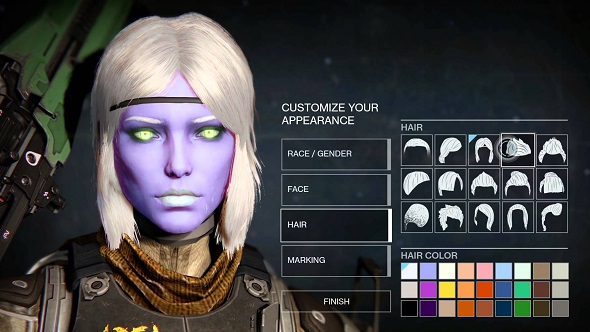
In case you strayed to console to try the first one – there’s no shame in it –Bungieallow character transfers to Destiny 2. However, all your stuff is gone; only your characters’ cosmetic features will carry over to Destiny 2, though there are some emblems to recognise your achievements in the first game.
Sadly, none of this business needs to concern us on PC.Bungie have confirmedthat console veterans are not able to transfer their profiles to PC to play Destiny 2 – that’s because those profiles are linked to your PSN ID or Xbox Gamertag, and thus can’t be transferred to another platform.
Destiny 2 trailers
The above launch trailer is one of Destiny’s flashy CG cinematics, and filled with movie-like moments. There’s also a shot of Cayde-6 holding a chicken, which is quite something.
This is the Destiny 2 Crucible trailer, which clearly wants you to know how hectic and action-packed its PvP is going to be.
The first Destiny 2 teaser trailer stars Nathan Fillion as witty rogue Cayde-6, reciting war stories in a bombed-out bar in the Last City before striding out to join the fray. The tone is equal parts bleak and humorous, lending depth to Cayde that he was missing in the original.
The ‘Last Call’ teaser was soon followed by the full reveal, in which the Vanguard leader, Commander Zavala, represents the inspirational, dramatic voice that Destiny has always had. The difference is, he’s nicely juxtaposed by Cayde’s comic relief; expect Destiny 2 to dial down the melodrama.
The E3 trailer showed us a little more of the Red Legion’s attack on The City.
